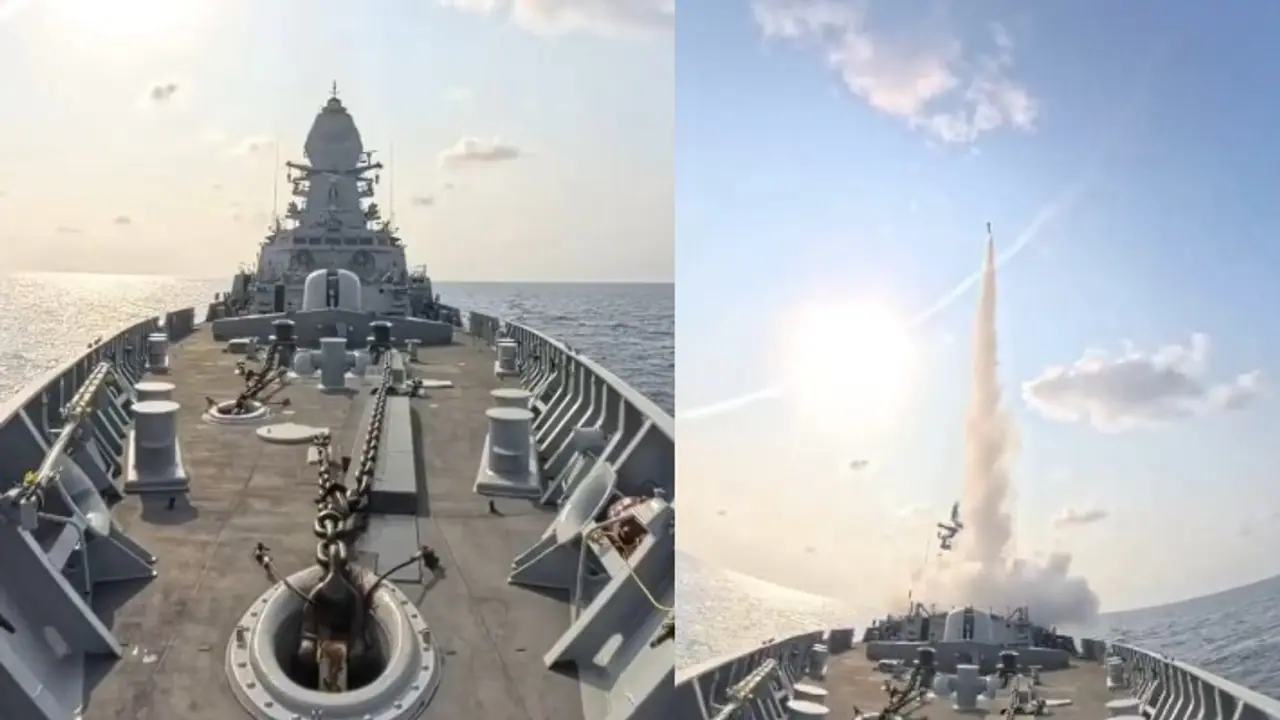Pakistan conducted surface-to-surface missile test off the Karachi coast, declaring a no-fly and no-sail zone in a stretch of the Arabian Sea. India launched a major air force drill showcasing Rafale fighter jets in simulated combat scenarios.
The brutal terror strike in Pahalgam, Jammu and Kashmir, on April 22, 2025, that killed 26 people—including tourists and civilians—has triggered a dangerous new chapter in India-Pakistan tensions.

Pakistan swiftly responded with the announcement of a surface-to-surface missile test off the Karachi coast between April 24 and 25, declaring a no-fly and no-sail zone in a stretch of the Arabian Sea. The missile, with a range of 480 km, signalled clear intent: Pakistan would respond militarily to any pressure from India.
But India was not silent. It launched Exercise Aakraman, a major air force drill showcasing Rafale fighter jets in simulated combat scenarios. Simultaneously, on April 24, the INS Surat, a cutting-edge, indigenous guided missile destroyer, successfully test-fired a Medium-Range Surface-to-Air Missile (MRSAM), striking a fast-moving sea-skimming target with surgical precision. This back-to-back show of air and naval strength underlined India's multi-domain preparedness.
Pakistan’s Missile Posturing: Backed by Chinese Technology
Pakistan's missile arsenal, while not as diversified as India’s, remains a serious threat. By 2025, Pakistan is estimated to have 170 nuclear warheads, according to the Stockholm International Peace Research Institute (SIPRI). Its missile inventory includes:
Nasr: A tactical nuclear-capable short-range missile meant to deter India’s conventional superiority.
Shaheen-2: A medium-range ballistic missile capable of striking deep into India.
Ababeel: Under development, with a 2,200 km range and equipped with MIRVs (Multiple Independently targetable Reentry Vehicles), meant to penetrate Indian missile defenses.
These programs are reportedly supported by Chinese technology, intensifying concerns about proliferation and regional destabilisation.
India’s Multi-Layered Superiority: From Agni to S-400
India, with an estimated 172 nuclear warheads as of January 2024, possesses a broader and more advanced missile arsenal. It is the only South Asian nation with a fully operational nuclear triad—the capability to launch nuclear weapons from land, air, and sea.
India’s arsenal includes:
Agni-V: A long-range ballistic missile (range: 5,000–8,000 km) forming the backbone of India’s strategic deterrence.
Pralay: A tactical missile under the Integrated Rocket Force, enhancing India’s short-range precision strike capability.
MRSAM: Recently tested aboard INS Surat, capable of neutralising aerial threats—drones, cruise missiles, and jets—up to 70 km away.
S-400 Triumf: The crown jewel in India’s air defence, this Russian-made system can track and destroy targets up to 400 km away, including stealth aircraft and ballistic missiles.
India began inducting the S-400 systems in late 2021, and by 2025, multiple regiments have been strategically deployed. They act as the outermost layer of India’s aerial shield, complementing both indigenous and integrated defences.
India’s Layered Missile Shield: PAD and AAD
While Pakistan flexes with its missile trials, India has already established a robust multi-layered missile defence system, positioning itself among a select group of nations with such advanced capabilities.
At the heart of this shield are two indigenously developed systems—PAD (Prithvi Air Defence) and AAD (Advanced Air Defence)—that intercept hostile ballistic missiles at different altitudes.
PAD (Prithvi Air Defence) serves as the first layer, targeting incoming missiles at high altitudes (above 50 km) in the exo-atmosphere. Using long-range radar tracking and mid-course guidance, PAD neutralises threats before they descend into Indian airspace.
AAD (Advanced Air Defence) kicks in as the second layer, intercepting missiles at lower altitudes (below 30 km) within the endo-atmosphere. It is designed to protect cities and vital assets in case an incoming missile escapes the PAD’s net.
Together, PAD and AAD form a two-tiered shield, offering 360-degree protection. India’s ongoing Phase-II BMD upgrades, coupled with systems like MRSAM and S-400, significantly widen the defensive gap between India and Pakistan. Unlike India, Pakistan lacks any comparable missile interception capability, leaving it more exposed in the event of escalation.
Naval Edge: INS Surat and BrahMos
India’s maritime superiority is another factor shifting the balance. The INS Surat, a Visakhapatnam-class stealth guided missile destroyer, stands at the forefront of this transformation. Armed with BrahMos supersonic cruise missiles, Israeli radar systems, and AI-driven combat technologies, the vessel reflects India’s strategic ambitions at sea.
Its successful MRSAM launch on April 24 reinforces India’s readiness in the maritime domain. Notably, INS Surat is a product of India’s growing defence self-reliance—with over 75% indigenous components, it showcases the strength of the Atmanirbhar Bharat mission.
Water, Treaties, and Escalating Rhetoric
The standoff isn’t limited to military muscle-flexing. India’s decision to suspend the Indus Waters Treaty, a move linked to Pakistan’s continued support for cross-border terrorism, marks a major diplomatic shift. In retaliation, Pakistan declared the Simla Agreement of 1972 in abeyance, threatening to pull back from all bilateral commitments.
Despite India’s no-first-use nuclear policy, its doctrine of massive retaliation stands firm—serving as a clear deterrent against potential misadventures.
Conclusion: Missiles Don’t Bring Peace—Dialogue Does
The current cycle of provocation and counter-provocation has escalated regional risks. With both countries possessing nuclear arms—and with external powers like China influencing Pakistan—the room for error is perilously thin.
India’s strength lies not only in its weapons systems but also in its strategic maturity. Its superiority across land, air, sea, and space is evident. Yet, strategic restraint, confidence-building measures, and renewed communication channels are equally critical.
For the 1.6 billion people of India and Pakistan, the path forward must not be paved with missiles and mutual suspicion—but with dialogue, development, and dignity.
(Author: Girish Linganna is an award-winning Science Writer and Defence, Aerospace & Political Analyst based in Bengaluru. He is also Director of ADD Engineering Components India Pvt. Ltd., a subsidiary of ADD Engineering GmbH, Germany. Reach him at: girishlinganna@gmail.com)


